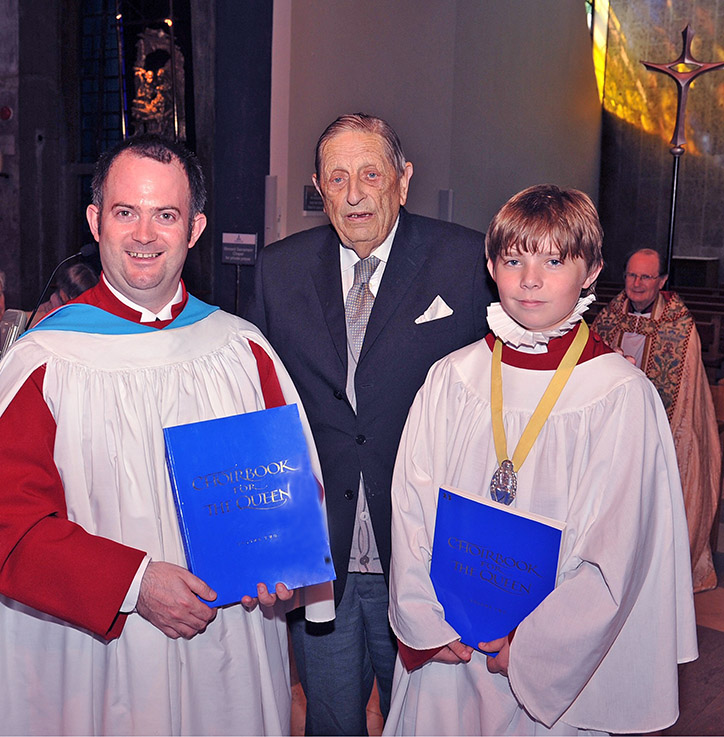Paddy Bryson and the Cathedral Choir
A Short History
When the Cathedral Crypt came into use in 1960, Archbishop Heenan founded the Cathedral Choir, and to provide a choir school he purchased The Gables, in Woolton, the St Francis Xavier's College Preparatory School, which was then up for sale. The new choir school was initially staffed with diocesan priests, but it was soon taken over by the Brothers of Christian Instruction (the de la Mennais Brothers). The Brothers expanded the school, and by the late 60s they had built what was to be an all-age independent school, known as Woolton College, with places for around 50 boarders. However, after five years, the project was not considered a success, and the brothers announced the closure of the school.
The Cathedral authorities immediately began to make plans to safeguard the Cathedral Choir and the education of the choristers. The overriding considerations were that the choristers (with an age range of 8-14) needed a school which had junior and senior departments on one campus, and which had no catchment area. The only school in the area which met these criteria was St Edward's, and I was deputed by the Archbishop to investigate the possibilities on behalf of the diocese and the Cathedral. Paddy Bryson was then Chairman of the College Governors, and he acted for the Christian Brothers. We first met over lunch in The Athenaeum, of which Paddy was a prominent member, and it was there that we had a number of meetings (and lunches) over the next months.
Paddy lost no time in recounting his already long connection with the Cathedral - in 1922 as a young singer he had begun to sing in what was to have been the Lady Chapel of the first design for the cathedral (by Edward Welby Pugin - a design soon to be abandoned. As the Lady Chapel was adjacent to St Edward's College, then housed in St Domingo House, it also served the College as its school chapel). As a member of the school choir, Paddy often sang in the Pro-Cathedral of St Nicholas, then in Copperas Hill, and in 1933 he was present at the laying of the foundation stone of the Lutyens Cathedral, on the site of the old Liverpool Workhouse on Brownlow Hill. (By then he was a young solicitor, and his practice had acted in the sale of the Workhouse.) He was present, too, at the first mass in the partly completed crypt in 1938, and at the Opening Mass of the present Cathedral, in 1967.
Paddy was excited by the possibility of St Edward's serving the Cathedral as its choir school, and he was tireless in his enthusiasm to draw up a satisfactory legal agreement for signature by the Archbishop and the Provincial of the Christian Brothers which would govern the relationship between the Cathedral and the College. That came into effect in 1975, and since then the school has offered strong and wide-ranging support for the choir, and through it, the Cathedral and the Diocese.
Paddy always maintained his interest in both choir and Cathedral. He endowed a scholarship, the Bryson Scholarship, to assist one chorister with school fees, and he took pleasure in presenting the award to each succeeding Bryson Chorister. He was always present at significant services and events in the Cathedral.
In the Queen's Jubilee Year, 2012, a 'Choirbook for The Queen' was published. It contained 44 items, mainly for use by Cathedral choirs up and down the country, including eleven especially composed for the book. Paddy bought a set of these Choirbooks for our Cathedral Choir; he was present at Evening prayer one Sunday in June 2012 officially to hand over the books to the Choir and during the service the choir gave the first performance of one anthem from the book, Joy at the Sound composed by Roxanne Panufnik, to words by Liverpool poet Roger McGough. Paddy, by then not very mobile, was thrilled by the occasion, by the singing and to meet the composer, who was present.
Philip Duffy
|
